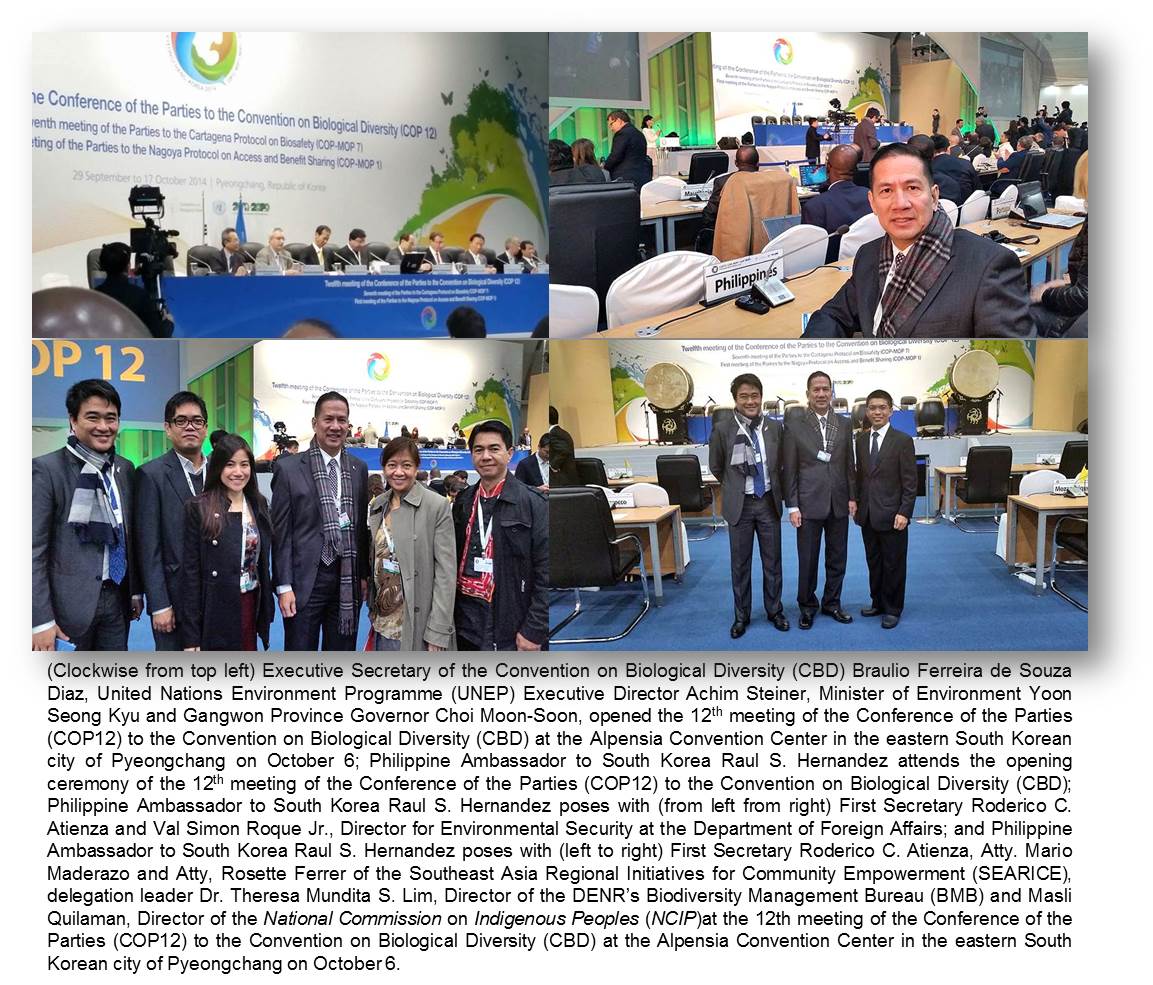
27 October 2014 - Filipino government officials, environmentalists and businesspeople joined some 3,000 representatives from 124 countries in participating at a United Nations (UN) convention on biodiversity in the eastern South Korean city of Pyeongchang from October 6 to 17.
Undersecretary of the Department of Environment and Natural Resources (DENR) Ernesto D. Adobo and Director of the DENR’s Biodiversity Management Bureau (BMB) Dr. Theresa Mundita S. Lim led the 13-member delegation to the 12th meeting of the Conference of the Parties (COP12) to the Convention on Biological Diversity (CBD).
Philippine Ambassador to South Korea Raul S. Hernandez and First Secretary Roderico C. Atienza joined the opening ceremony on October 6.
Apart from the official delegation, there were other Filipinos at the COP12 working for the international organizations, such as the United Nations Development Programme, the ASEAN Centre for Biodiversity (ACB), Global Environment Facility (GEF), as well as non-governmental organizations (NGOs), such as the CBD Alliance and the Southeast Asia Regional Initiatives for Community Empowerment.
Considering the importance of the timing of the international gathering, COP12 adopted the new declaration, its first over the past ten years, at the convention level. South Korea proposed the declaration, as it was the convention's host country. Final agreement on the declaration was made after one year’s preparation and negotiation.
Taking the theme "Biodiversity for Sustainable Development", the conference adopted the Pyeongchang Road Map that addresses ways to achieve the UN sustainable development goals, and the Gangwon Declaration containing the results of the conference.
The Gangwon Declaration, the first over the past ten years and the fourth since the COP started, covers major issues of the conference and initiatives of environment ministries worldwide, who urged countries to ratify the earlier Nagoya Protocol and emphasized the mainstreaming of biodiversity.
The Convention on Biological Diversity, informally known as the biodiversity convention, was adopted at the UN Conference on Environment and Development in 1992 to address all issues pertaining to biological diversity.
The multilateral treaty is one of the three UN conventions aimed at protecting the environment. The other two are the Framework Convention on Climate Change and the Convention to Combat Desertification. END

